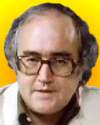
Born 22 Dec 1936. quotes
Northern Irish science writer and historian.
Northern Irish science writer and historian.
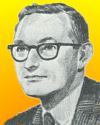
Born 22 Dec 1917; died 29 Nov 1999 at age 81.
American organic chemist who prepared a synthetic version of the hormone cortisone (1944) using a complicated 36-step process. He was a research scientist (1942-48) at Merck & Co., Inc. Four years later the Mayo Clinic demonstrated the efficacy of the product against rheumatoid arthritis. Cortisone also has wide-ranging applications in the treatment of allergies as well as inflammatory and neoplastic diseases. In 1949, Sarett and several collaborators initiated an alternative synthesis commencing with raw materials derivable from coal, air, lime, and water. This led to the first route independent of naturally occurring starting materials. Sarett was the 1975 recipient of the National Medal of Science.«
American organic chemist who prepared a synthetic version of the hormone cortisone (1944) using a complicated 36-step process. He was a research scientist (1942-48) at Merck & Co., Inc. Four years later the Mayo Clinic demonstrated the efficacy of the product against rheumatoid arthritis. Cortisone also has wide-ranging applications in the treatment of allergies as well as inflammatory and neoplastic diseases. In 1949, Sarett and several collaborators initiated an alternative synthesis commencing with raw materials derivable from coal, air, lime, and water. This led to the first route independent of naturally occurring starting materials. Sarett was the 1975 recipient of the National Medal of Science.«
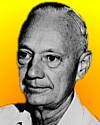
Born 22 Dec 1911; died 20 Dec 2002 at age 90. quotes
U.S. amateur astronomer and radio engineer who self-financed and built the first radio telescope. He pioneered the new field of radio astronomy, and was the first to systematically study the sky by observing non-visible radiation. After reading about Jansky's discovery (1932) of natural radio emissions from space, Reber constructed a 9-meter dish antenna in his back yard and built three different detectors before finding 160 MHz signals (1939). In 1940 and 1944 he published articles titled Cosmic Static in the Astrophysical Journal. He was the first to express received radio signals in terms of flux density and brightness, first to find evidence that galactic radiation is non-thermal, and first to produce radio maps of the sky (1941).«
U.S. amateur astronomer and radio engineer who self-financed and built the first radio telescope. He pioneered the new field of radio astronomy, and was the first to systematically study the sky by observing non-visible radiation. After reading about Jansky's discovery (1932) of natural radio emissions from space, Reber constructed a 9-meter dish antenna in his back yard and built three different detectors before finding 160 MHz signals (1939). In 1940 and 1944 he published articles titled Cosmic Static in the Astrophysical Journal. He was the first to express received radio signals in terms of flux density and brightness, first to find evidence that galactic radiation is non-thermal, and first to produce radio maps of the sky (1941).«
It Doesn't Take a Rocket Scientist: Great Amateurs of Science, by John Malone. - book suggestion.
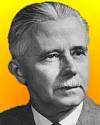
Born 22 Dec 1903; died 17 Mar 1983 at age 79.
American physiologist who shared (with George Wald and Ragnar Granit) the 1967 Nobel Prize for Physiology or Medicine for his analysis of how the sensory cells of the retina of the eye evaluate the light stimulus. In his early career, he studied the metabolism of nerve cells and in time came to research individual cells in the retina of the eye. He used tiny electrodes to isolate individual fibres in the eyes of horseshoe crabs and frogs. He learned how impulse generation in the sensory cells transmits a code in response to illumination of different intensity and duration. He spent almost half a century advancing the understanding of the neurophysiology of vision.«
American physiologist who shared (with George Wald and Ragnar Granit) the 1967 Nobel Prize for Physiology or Medicine for his analysis of how the sensory cells of the retina of the eye evaluate the light stimulus. In his early career, he studied the metabolism of nerve cells and in time came to research individual cells in the retina of the eye. He used tiny electrodes to isolate individual fibres in the eyes of horseshoe crabs and frogs. He learned how impulse generation in the sensory cells transmits a code in response to illumination of different intensity and duration. He spent almost half a century advancing the understanding of the neurophysiology of vision.«
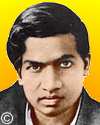
Born 22 Dec 1887; died 26 Apr 1920 at age 32. quotes
Srinivasa Aiyangar Ramanujan was an Indian mathematician who did notable work on hypergeometric series and continued fractions. In number theory, he discovered properties of the partition function. Although self-taught, he was one of India's greatest mathematical geniuses. He worked on elliptic functions, continued fractions, and infinite series. His remarkable familiarity with numbers, was shown by the following incident. While Ramanujan was in hospital in England, his Cambridge professor, G. H. Hardy, visited and remarked that he had taken taxi number 1729, a singularly unexceptional number. Ramanujan immediately responded that this number was actually quite remarkable: it is the smallest integer that can be represented in two ways by the sum of two cubes: 1729=13+123=93+103.« more
Srinivasa Aiyangar Ramanujan was an Indian mathematician who did notable work on hypergeometric series and continued fractions. In number theory, he discovered properties of the partition function. Although self-taught, he was one of India's greatest mathematical geniuses. He worked on elliptic functions, continued fractions, and infinite series. His remarkable familiarity with numbers, was shown by the following incident. While Ramanujan was in hospital in England, his Cambridge professor, G. H. Hardy, visited and remarked that he had taken taxi number 1729, a singularly unexceptional number. Ramanujan immediately responded that this number was actually quite remarkable: it is the smallest integer that can be represented in two ways by the sum of two cubes: 1729=13+123=93+103.« more
The Man Who Knew Infinity, by Robert Kanigel. - book suggestion.
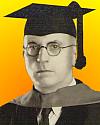
Born 22 Dec 1876; died 10 Dec 1957 at age 80.
Swedish-American electrical engineer and metallurgist who created Permalloy (1916) and related alloys with high magnetic permeability used in communications equipment. An alloy with this property can be easily magnetized and demagnetized, especially useful for applications in electrical equipment, telephones and other communications systems. He developed the nickel-iron Permalloy in 1916, for Western Electric Company (later Bell Telephone Laboratories). Later, in 1923, Elmen found that magnetic permeability could be dramatically enhanced if Permalloy was heat treated. Its magnetic permeability exceeded that of silicon steel. His discovery made possible deep-sea telegraph cables of large message- carrying capacity.«
Swedish-American electrical engineer and metallurgist who created Permalloy (1916) and related alloys with high magnetic permeability used in communications equipment. An alloy with this property can be easily magnetized and demagnetized, especially useful for applications in electrical equipment, telephones and other communications systems. He developed the nickel-iron Permalloy in 1916, for Western Electric Company (later Bell Telephone Laboratories). Later, in 1923, Elmen found that magnetic permeability could be dramatically enhanced if Permalloy was heat treated. Its magnetic permeability exceeded that of silicon steel. His discovery made possible deep-sea telegraph cables of large message- carrying capacity.«
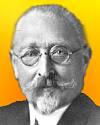
Born 22 Dec 1872; died 9 Jun 1961 at age 88.
French bacteriologist who (with Albert Calmette) developed, the tuberculosis vaccine known as Bacillus Calmette-Guérin, or BCG (1921). It was adopted throughout Europe and America against tuberculosis. As a vaccine it is an attenuated (weakened) form of the Mycobacterium bovis bacterium. When injected, it gives partial protection against tuberculosis, by stimulating the body's defence system without causing the disease. A successful vaccination produces a lump at the injection site.«
French bacteriologist who (with Albert Calmette) developed, the tuberculosis vaccine known as Bacillus Calmette-Guérin, or BCG (1921). It was adopted throughout Europe and America against tuberculosis. As a vaccine it is an attenuated (weakened) form of the Mycobacterium bovis bacterium. When injected, it gives partial protection against tuberculosis, by stimulating the body's defence system without causing the disease. A successful vaccination produces a lump at the injection site.«
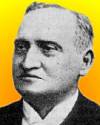
Born 22 Dec 1859; died 14 May 1924 at age 64.
Italian mathematical economist who builton the general equilibrium theory of Léon Walras and was instrumental in convincing Walras to incorporate variable production techniques - and, by extension, marginal productivity theory - into the Walras theory. Barone's greatest contribution was in getting the "Socialist Calculation" debate started with his famous 1908 article. His position was that it was indeed possible in a collectivist state for a planning agency to calculate prices for maximum efficiency. He was the first to apply indifference curve analysis to compare the relative burdens of income taxes and excise taxes (1912). He opposed "progressive" taxation schemes as based on dubious utilitarian calculations.«
Italian mathematical economist who builton the general equilibrium theory of Léon Walras and was instrumental in convincing Walras to incorporate variable production techniques - and, by extension, marginal productivity theory - into the Walras theory. Barone's greatest contribution was in getting the "Socialist Calculation" debate started with his famous 1908 article. His position was that it was indeed possible in a collectivist state for a planning agency to calculate prices for maximum efficiency. He was the first to apply indifference curve analysis to compare the relative burdens of income taxes and excise taxes (1912). He opposed "progressive" taxation schemes as based on dubious utilitarian calculations.«
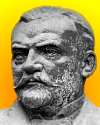
Born 22 Dec 1850; died 15 Aug 1910 at age 59. quotes
Russian chemist who, while working for Ira Remsen on coal tar compounds, discovered saccharin (anhydroorthosulphaminebenzoic acid), in a synthesis from toluene. The compound is 220 times sweeter than cane sugar. Initially called benzoic sulphinide, Fahlberg coined the trade name “saccharin” (from the Latin word for sugar). With his uncle, Dr. Adolph List, he established a saccharin factory in in Magdeburg, Germany (1896), known as Fahlberg-List. He obtained a patent in Britain in 1886, and several patents in America. beginning with U.S. No.326,281 (issued 15 Sep 1885). What Fahlberg initially prepared in gram quantities in the laboratory, he turned into a product manufactured in ton quantities, making him wealthy. During the 1960s to 2000, saccharin was suspected as a carcinogen, but is now regarded as safe.« more
Russian chemist who, while working for Ira Remsen on coal tar compounds, discovered saccharin (anhydroorthosulphaminebenzoic acid), in a synthesis from toluene. The compound is 220 times sweeter than cane sugar. Initially called benzoic sulphinide, Fahlberg coined the trade name “saccharin” (from the Latin word for sugar). With his uncle, Dr. Adolph List, he established a saccharin factory in in Magdeburg, Germany (1896), known as Fahlberg-List. He obtained a patent in Britain in 1886, and several patents in America. beginning with U.S. No.326,281 (issued 15 Sep 1885). What Fahlberg initially prepared in gram quantities in the laboratory, he turned into a product manufactured in ton quantities, making him wealthy. During the 1960s to 2000, saccharin was suspected as a carcinogen, but is now regarded as safe.« more
Empty Pleasures: The Story of Artificial Sweeteners from Saccharin to Splenda, by Carolyn de la Pena. - book suggestion.
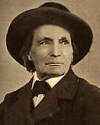
Born 22 Dec 1823; died 11 Oct 1915 at age 91. quotes
French entomologist and author who popularized insect natural history. He wrote ten volumes of Souvenirs entomologiques (1879-1907) in which he recorded his perceptive field observations of insect behaviour. Although his career began as a professor of physics, and in 1866 he isolated alizarin (the colouring agent in madder), his life work became the study of insects, about which he wrote in elegant prose. From his study of parasitic wasps he deduced that much of the wasp's behaviour is inherited and not learned. Victor Hugo dubbed him “the insects' Homer” and Edmond Rostand named him the “Virgil of insects.” Darwin cited him as “an incomparable observer.”«
French entomologist and author who popularized insect natural history. He wrote ten volumes of Souvenirs entomologiques (1879-1907) in which he recorded his perceptive field observations of insect behaviour. Although his career began as a professor of physics, and in 1866 he isolated alizarin (the colouring agent in madder), his life work became the study of insects, about which he wrote in elegant prose. From his study of parasitic wasps he deduced that much of the wasp's behaviour is inherited and not learned. Victor Hugo dubbed him “the insects' Homer” and Edmond Rostand named him the “Virgil of insects.” Darwin cited him as “an incomparable observer.”«
Fabre's Book of Insects, by Jean-Henri Fabre, et al. - book suggestion.
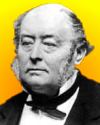
Born 22 Dec 1815; died 25 Nov 1887 at age 71.
Swiss jurist and cultural anthropologist best known for his study of ancient matriarchies, Das Mutterrecht (1861; "Mother Right"), in which he desribed his finding that the matriarchy existed among all primitive peoples. He studied ancient civilizations in Italy, Greece, and Spain with a particular interest in the laws, customs, and rituals of ancient societies. He interpreted the spiritual and social worlds of ancient societies not only through analysis of myths, but also by the archaeological artifacts, and the information he drew from the iconography of funeral urns (though in this latter skill, his exactness may have sometimes strayed with his imagination).«
Swiss jurist and cultural anthropologist best known for his study of ancient matriarchies, Das Mutterrecht (1861; "Mother Right"), in which he desribed his finding that the matriarchy existed among all primitive peoples. He studied ancient civilizations in Italy, Greece, and Spain with a particular interest in the laws, customs, and rituals of ancient societies. He interpreted the spiritual and social worlds of ancient societies not only through analysis of myths, but also by the archaeological artifacts, and the information he drew from the iconography of funeral urns (though in this latter skill, his exactness may have sometimes strayed with his imagination).«
Myth, Religion, and Mother Right, by Johann Jakob Bachofen. - book suggestion.
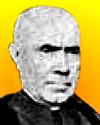
Born 22 Dec 1799; died 10 Jan 1864 at age 64.
Irish physicist who pioneered in electrical science. He invented the induction coil (1836) before that of better-known Heinrich Ruhmkorff. Callan's coil was built using a horseshoe shaped iron bar wound with a secondary coil of thin insulated wire under a separate winding of thick insulated wire as the “primary” coil. Each time a battery's current through the “primary” coil was interrupted, a high voltage current was produced in the electrically separate “secondary” coil. By 1837, Callan used a clock mechanism to rock a wire in and out of a small cup of mercury to interrupt the circuit 20 times/sec on a giant induction machine, producing 15-inch sparks (estimated at 600,000 volts).«
Irish physicist who pioneered in electrical science. He invented the induction coil (1836) before that of better-known Heinrich Ruhmkorff. Callan's coil was built using a horseshoe shaped iron bar wound with a secondary coil of thin insulated wire under a separate winding of thick insulated wire as the “primary” coil. Each time a battery's current through the “primary” coil was interrupted, a high voltage current was produced in the electrically separate “secondary” coil. By 1837, Callan used a clock mechanism to rock a wire in and out of a small cup of mercury to interrupt the circuit 20 times/sec on a giant induction machine, producing 15-inch sparks (estimated at 600,000 volts).«
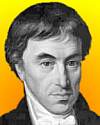
Born 22 Dec 1765; died 21 Apr 1825 at age 59.
German mathematician who proposed the first general method of integrating partial differential equations of the first order. Pfaff did important work on special functions and the theory of series. He developed Taylor's Theorem using the form with remainder as given by Lagrange. In 1810 he contributed to the solution of a problem due to Gauss concerning the ellipse of greatest area which could be drawn inside a given quadrilateral. His most important work on Pfaffian forms was published in 1815 when he was nearly 50, but its importance was not recognised until 1827 when Jacobi published a paper on Pfaff's method.«
German mathematician who proposed the first general method of integrating partial differential equations of the first order. Pfaff did important work on special functions and the theory of series. He developed Taylor's Theorem using the form with remainder as given by Lagrange. In 1810 he contributed to the solution of a problem due to Gauss concerning the ellipse of greatest area which could be drawn inside a given quadrilateral. His most important work on Pfaffian forms was published in 1815 when he was nearly 50, but its importance was not recognised until 1827 when Jacobi published a paper on Pfaff's method.«

Died 22 Dec 2003 at age 87 (born 1 Apr 1916).
American inventor of a pioneering valve used in the treatment of hydrocephalus (“water on the brain”). Shortly after birth (1955), his son suffered from hydrocephalus. Holter learned from surgeons Eugene Spitz and Frank Nulsen that a suitable valve to drain fluid from the brain could maintain normal cranial pressure. To save his son, Holter invented a pressure-sealing valve made from silicone to avoid clogging problems. He subsequently refined and patented the device. Spitz and Holter set up a company to manufacture the shunts using Silastic silicone. The Spitz-Holter valve has helped millions around the world since the late 1950s. Holter later created other medical devices, including dialysis pumps, artificial heart valves and finger tendons.«[Image: Schematic of placement of drainage tube with valve seen placed subcutaneously beside ear.]
American inventor of a pioneering valve used in the treatment of hydrocephalus (“water on the brain”). Shortly after birth (1955), his son suffered from hydrocephalus. Holter learned from surgeons Eugene Spitz and Frank Nulsen that a suitable valve to drain fluid from the brain could maintain normal cranial pressure. To save his son, Holter invented a pressure-sealing valve made from silicone to avoid clogging problems. He subsequently refined and patented the device. Spitz and Holter set up a company to manufacture the shunts using Silastic silicone. The Spitz-Holter valve has helped millions around the world since the late 1950s. Holter later created other medical devices, including dialysis pumps, artificial heart valves and finger tendons.«[Image: Schematic of placement of drainage tube with valve seen placed subcutaneously beside ear.]
Died 22 Dec 1921 at age 60 (born 10 Feb 1861).
Early American ethnographer of American Indians, especially those of the southeastern United States. His investigations of the history, heraldry, and culture of the Cherokee and Kiowa included the deciphering of the Kiowa calendar and the discovery of an ancient ritual of the North Carolina Cherokee recorded in the native script.
Early American ethnographer of American Indians, especially those of the southeastern United States. His investigations of the history, heraldry, and culture of the Cherokee and Kiowa included the deciphering of the Kiowa calendar and the discovery of an ancient ritual of the North Carolina Cherokee recorded in the native script.
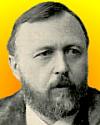
Died 22 Dec 1902 at age 62 (born 14 Aug 1840). quotes
German neurologist and neuropsychiatrist (baron) who opened the field of sexual psychopathology. He was recognized as an authority on deviant sexual behavior and its medicolegal aspects. He was the first to write on the subject in his Psychopathia Sexualis (1886). It contained 51 case histories out of the hundreds of medical and court reports he had collected. Therein, he also coined the terms sadism and masochism derived from the names of the Marquis de Sade and Leopold von Sacher-Masoch (1836-1895). He also introduced therm “paranoia.” His work provided a foundation for the work of Sigmund Freud two decades later.«
German neurologist and neuropsychiatrist (baron) who opened the field of sexual psychopathology. He was recognized as an authority on deviant sexual behavior and its medicolegal aspects. He was the first to write on the subject in his Psychopathia Sexualis (1886). It contained 51 case histories out of the hundreds of medical and court reports he had collected. Therein, he also coined the terms sadism and masochism derived from the names of the Marquis de Sade and Leopold von Sacher-Masoch (1836-1895). He also introduced therm “paranoia.” His work provided a foundation for the work of Sigmund Freud two decades later.«
Stepchildren of Nature: Krafft-Ebing, Psychiatry, and the Making of Sexual Identity, by Harry Oosterhuis. - book suggestion.
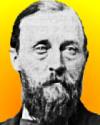
Died 22 Dec 1887 at age 58 (born 7 Sep 1829).
American geologist and explorer of the U.S. West. After finishing a medical school training (1853), his early career began in paleontology for James Hall, collecting fossils in the Badlands and the Upper Missouri Valley. It is believed he made the first North American discovery of dinosaur remains (1854) during this expedition. During the Civil War, he served as a surgeon in the Civil War, after which he resumed his western explorations. His work in the Great Plains and Rocky Mountains helped lay the foundation of the U.S. Geological Survey. Hayden is credited with having the Yellowstone geyser area declared the first national park (1872). He hosted the Western botanical journey of Gray and Hooker in 1877.«
American geologist and explorer of the U.S. West. After finishing a medical school training (1853), his early career began in paleontology for James Hall, collecting fossils in the Badlands and the Upper Missouri Valley. It is believed he made the first North American discovery of dinosaur remains (1854) during this expedition. During the Civil War, he served as a surgeon in the Civil War, after which he resumed his western explorations. His work in the Great Plains and Rocky Mountains helped lay the foundation of the U.S. Geological Survey. Hayden is credited with having the Yellowstone geyser area declared the first national park (1872). He hosted the Western botanical journey of Gray and Hooker in 1877.«
Strange Genius: The Life of Ferdinand Vandeveer Hayden, by Mike Foster. - book suggestion.
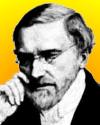
Died 22 Dec 1867 at age 79 (born 1 Jul 1788). quotes
French mathematician and engineer whose study of the pole and polar lines associated with conic led to the principle of duality. While serving as an engineer in Napoleon's 1812 Russian campaign, he was left for dead at Krasnoy, but then captured. During his imprisonment he studied projective geometry and wrote a treatise on analytic geometry. Released in 1814, he returned to France, and in 1822 published Traité des propriétés projectives des figures in which he presented his fundamental ideas of projective geometry such as the cross-ratio, perspective, involution and the circular points at infinity. As a professor of mechanics (1825-35), he applied mechanics to improve waterwheels and was able to double their efficiency.«
French mathematician and engineer whose study of the pole and polar lines associated with conic led to the principle of duality. While serving as an engineer in Napoleon's 1812 Russian campaign, he was left for dead at Krasnoy, but then captured. During his imprisonment he studied projective geometry and wrote a treatise on analytic geometry. Released in 1814, he returned to France, and in 1822 published Traité des propriétés projectives des figures in which he presented his fundamental ideas of projective geometry such as the cross-ratio, perspective, involution and the circular points at infinity. As a professor of mechanics (1825-35), he applied mechanics to improve waterwheels and was able to double their efficiency.«
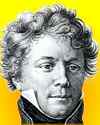
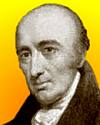
Died 22 Dec 1828 at age 62 (born 6 Aug 1766). quotes
English chemist and physicist who discovered palladium (1803) and rhodium (1804), during his investigation of platinum ore. He developed a method of forming platinum - powder-metallurgy - and was the first to produce malleable and ductile platinum on a commercial scale. He made his method public at the Royal Society on 28 Nov 1828, shortly before his death. In 1801 he proved experimentally that frictional and current electricity are the same. He is particularly noted for being the first to observe dark lines in the spectrum of the sun which eventually led to the discovery of the elements in the Sun. He constructed the Wollaston prism, a polarizing beam splitter (now applied in the CD player), and invented the camera lucida.«
English chemist and physicist who discovered palladium (1803) and rhodium (1804), during his investigation of platinum ore. He developed a method of forming platinum - powder-metallurgy - and was the first to produce malleable and ductile platinum on a commercial scale. He made his method public at the Royal Society on 28 Nov 1828, shortly before his death. In 1801 he proved experimentally that frictional and current electricity are the same. He is particularly noted for being the first to observe dark lines in the spectrum of the sun which eventually led to the discovery of the elements in the Sun. He constructed the Wollaston prism, a polarizing beam splitter (now applied in the CD player), and invented the camera lucida.«
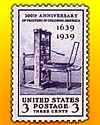
Died 22 Dec 1668 (born c. 1594).
English locksmith who established the first printing press in England's North American colonies. In 1638, Rev. Jose Glover pursuaded Day to sail with him from England to British North America with a printing press to produce religious texts. Day's son Matthew was a printer's apprentice. Although Glover died en-route, the press was set up at Harvard College, Cambridge, Mass. The Days printed a broadside and an almanac in their first year. In 1639, it is believed that Stephen Day produced his first work, The Freeman's Oath. The next year, the first book to be printed in North America was 1,700 copies of the Bay Psalm Book. In 1649, Matthew died, and officials of Harvard College appointed Samuel Green to operate the Cambridge Press.«
English locksmith who established the first printing press in England's North American colonies. In 1638, Rev. Jose Glover pursuaded Day to sail with him from England to British North America with a printing press to produce religious texts. Day's son Matthew was a printer's apprentice. Although Glover died en-route, the press was set up at Harvard College, Cambridge, Mass. The Days printed a broadside and an almanac in their first year. In 1639, it is believed that Stephen Day produced his first work, The Freeman's Oath. The next year, the first book to be printed in North America was 1,700 copies of the Bay Psalm Book. In 1649, Matthew died, and officials of Harvard College appointed Samuel Green to operate the Cambridge Press.«
In 1987, U.S. scientists say a single gene may decide the sex of a baby.
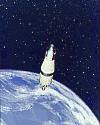
In 1968, the first U.S. live telecast from a manned spacecraft in outer space was transmitted at 3:01 p.m. from Apollo VIII. The earth appeared as a blurred ball of light. The craft was 139,000 miles from earth, 31-hr 20-min after launch. the previous day. A total of six live television transmission sessions were done by the crew during the mission, including the famous Christmas Eve broadcast in which the astronauts read from the book of Genesis. The crew for the flight was Captain James Lovell, Colonel Frank Borman and Major William Anders. The primary purpose of this mission was to further progress toward the goal of landing men on the Moon by gaining operational experience and testing the Apollo system.
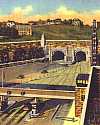
New Jersey entrance, Late 1940s

1937
In 1924, Thomas A. Edison was issued a U.S. design patent for a “Design for a Phonograph Cabinet.” (Design patent No. 69068). In addition to a front and side elevation, the patent showed an enlarged portion of the front elevation showing more clearly the details of one of the panels or grilles. The design patent covers the ornamental design for a phonograph cabinet as shown for a term of 14 years. A design patent protects only the appearance of the article and not structural or utilitarian features.
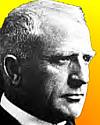


In 1882, the first string of electric lights decorating a Christmas tree was created for his home by Edward H. Johnson, an associate of Thomas Edison. Previously, trees had been decorated with wax candles. The Dec 1901 issue of the Ladies' Home Journal advertised the Christmas tree lamps, first made commercially by the Edison General Electric Co. of Harrison, N.J. in strings of nine sockets, each with a miniature 2 candlepower, 32-volt, carbon-filament lamp*. Christmas tree lights quickly became the rage among wealthy Americans, but the average citizen didn't use them until the 1920s or later. Character light bulbs became popular in the 1920s, bubble lights in the 1940s, twinkle bulbs in the 1950s and plastic bulbs by 1955.«[Image: First Christmas tree decorated with 80 walnut-sized red, white and blue hand-wired lamps.] more
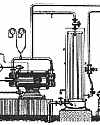
In 1879, the liquefaction of oxygen was announced by Raoul Pierre Pictet (1846-1929), a Swiss chemist and physicist, by sending a telegram to the French Academy: Oxygen liquefied today under 320-atm and 140 degrees of cold by combined use of sulfurous and carbonic acid. French physicist Louis Cailletet made a similar announcement two days later. Pictet's early interest was in ice-making machines. Later, he studied extremely low temperatures and the liquefaction of gases. Both Pictet and Cailletet used both cooling and compression to liquefy oxygen but they achieved this using different techniques. Pictet's method had an advantage in that produced the liquid gas in greater quantity and was easier to apply to other gases.[Image: part of a Pictet machine to cool down glycerine, which was pumped through a piping system in the first artificial skating track:]
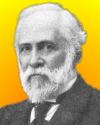
Young

Flash spectrum of Sun's chromosphere during eclipse on 14 Jan 1926.
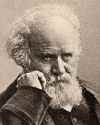
In 1870, Jules César Janssen flew in a balloon in order to study the solar eclipse. Using the balloon he escaped the German siege of Paris to study the eclipse in Algeria. He reached Oran (or Wahran), Algeria, but the eclipse was clouded out.
In 1666, the French Academy of Sciences was founded by seven mathematicians and seven physicists meeting in the king's library. The society was an outgrowth of an informal community of scientists who coordinated their research efforts through the efforts of Marin Mersenne, a monk at the Minim monastery, who had exchanged 10,000 letters with them. In 1699, King Louis XIV (who also supported the Paris Observatory) issued a formal decree of protection to the new Academy. Initially, in the constitution that he gave the society, the king retained the right to appoint members, but later membership was given by election. In 1805, the Academy moved its meetings from the Louvre to the Institute of France building.«*





